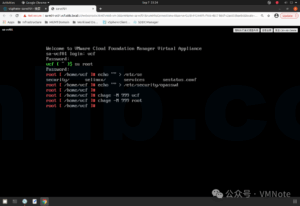To study for VMware HCI Master Specialist Exam | vSAN认证考试题目学习
75. A vSAN policy has been configured with Erasure Coding on a vSAN stretched cluster.
Which RAID level and FTT setting have been specified?
- A. SFTT with RAID1
- B. PFTT with RAID1
- C. PFTT with RAID5/6
- D. SFTT with RAID5/6
Explaination:
In a vSAN stretched cluster, when using Erasure Coding, the most appropriate configuration would be “C. PFTT with RAID5/6”.
Here’s why:
- PFTT (Primary Failures to Tolerate) refers to the number of host, disk, or network failures a storage object can tolerate before it becomes unavailable in the primary site of a stretched cluster. In vSAN, PFTT is used to determine the level of redundancy within a site.
- RAID5/6 in vSAN (Erasure Coding) provides space efficiency and allows for failure tolerance. RAID5 is used when PFTT is set to 1 (tolerate one failure) and RAID6 is used when PFTT is set to 2 (tolerate two failures).
Options A and B mention RAID1, which is mirroring and not erasure coding. RAID1 is typically used for configurations where space efficiency is less of a concern compared to performance or simplicity.
Option D, SFTT with RAID5/6, is not typically used. SFTT (Secondary Failures to Tolerate) is more about tolerating failures in the secondary site in a stretched cluster, and it’s not commonly associated with RAID levels directly. RAID5/6, being a form of Erasure Coding, is more about how data is distributed within a site (primary site in the case of a stretched cluster) to ensure availability and resiliency.
在一个vSAN伸展集群中,配置了具有纠删编码的vSAN策略。
指定了哪种RAID级别和FTT设置?
- A. SFTT与RAID1
- B. PFTT与RAID1
- C. PFTT与RAID5/6
- D. SFTT与RAID5/6
解释:
在vSAN伸展集群中,使用纠删编码时,最合适的配置将是“C. PFTT与RAID5/6”。
原因如下:
PFTT(主要故障容忍度)指的是在伸展集群的主要站点中,存储对象在变得不可用之前可以容忍的主机、磁盘或网络故障次数。在vSAN中,PFTT用于确定站点内部的冗余级别。
vSAN中的RAID5/6(纠删编码)提供了空间效率,并允许故障容忍。当PFTT设置为1(容忍一个故障)时使用RAID5,当PFTT设置为2(容忍两个故障)时使用RAID6。
选项A和B提到的是RAID1,即镜像,并非纠删编码。RAID1通常用于对空间效率的关注较低,而更重视性能或简便性的配置中。
选项D,SFTT与RAID5/6,通常不被使用。SFTT(次要故障容忍度)更多地涉及到在伸展集群的次要站点中容忍故障,它通常不直接与RAID级别相关联。RAID5/6作为一种纠删编码形式,更多地与如何在站点内(在伸展集群的情况下为主要站点)分布数据以确保可用性和弹性有关。






 VM技术助理
VM技术助理














